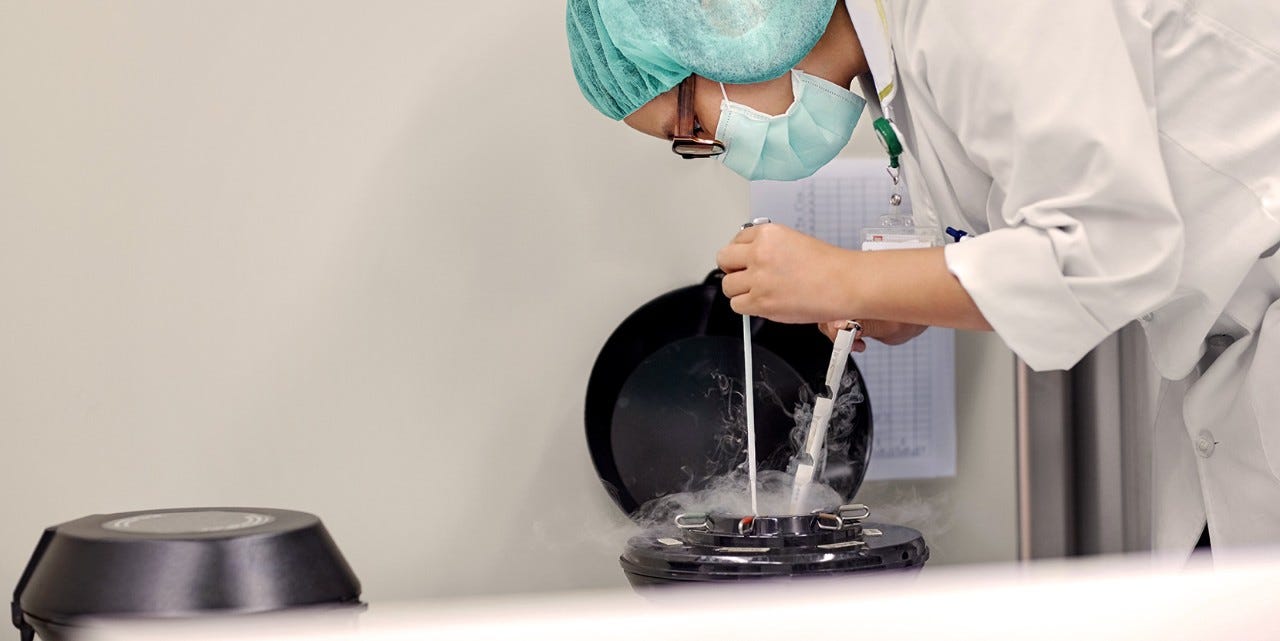Social freezing: when your plans for a family are put on ice
Social freezing helps women to outsmart the ageing process a little. Expert Brigitte Leeners talks about social freezing in Switzerland.

Professor Brigitte Leeners, Director of the Clinic for Reproductive Endocrinology at the University Hospital Zurich, explains what social freezing is all about and why it makes sense to find out about your own fertility at an early stage.
Professor Leeners, if I have my eggs frozen, where will they be?
They are frozen within seconds and stored in secure nitrogen tanks. Our tanks at the USZ are very secure: They are equipped with warning systems in the event of a power failure, fire and the technical department is on call day and night. This ensures that you can access your eggs when you need them.
How long are frozen eggs stored?
In Switzerland, eggs are allowed to be stored for up to ten years.
Is the quality of the eggs affected if they are not defrosted until five or ten years later?
No. There are even some instances in America where frozen eggs have been used 30 years later. The ten-year rule is mainly a politically-motivated decision and less a medical one.
Does social freezing make it possible to have children in your fifties or later?
First the good news: nowadays women are in much better health as they age. But it is of course important to have a check up before you try to conceive. If you are 45 or older, we perform a thorough assessment to determine how risky a pregnancy would be.
But it is possible...
We are, of course, limited by our biology, despite all our efforts. The less fertile a women is, the more difficult it will be to collect any mature eggs. On average, one in six eggs will result in a pregnancy. Ideally, you should remove approx. 15 eggs, but only mature eggs can be used. It is virtually impossible to further mature eggs outside of the body. Not all eggs are mature when collected. This means most women need to do two rounds in order to collect enough mature eggs.
In other words, to become pregnant at 50, you need to have frozen your eggs at 40. Which, although not impossible, is also not entirely straightforward. And of course there are many risks associated with older mothers, for both them and their child, that would encourage pregnancy at a younger age.
When is the ideal time to consider social freezing?
A 25-year-old female has the highest chance of conceiving. Up to the age of 35, women still have a very high chance of conceiving. This is also the age at which most eggs are frozen. Women of this age start to think about their fertility. Most of the women that come to us are yet to find a suitable partner. More rarely they want to focus on their career without the worry of a ticking biological clock. They want to free themselves from the pressure of it being too late and make sure it is still possible to have children.
Would you recommend the treatment to every woman?
Many worry about it beforehand, but once they know what it involves they tend to relax when they realise that the procedure is not very taxing on the body. The risks relate more to the pregnancy that could follow: for example, are there any pre-existing conditions?
If a pregnancy is considered too dangerous, then social freezing is not recommended. Yet treatment involves effort and costs for something that might not even be used in the future.
Women should aim to live as healthily as they can during the stimulation phase. No smoking before and during treatment, checking medication carefully and drinking as little alcohol as possible: these are all factors that affect the quality of the eggs.
What are the common side effects?
Virtually none. In the preparatory phase you may feel a little irritable and tired. The stimulation phase with injections is annoying but does not result in any real side effects. Hormones are produced by the maturing follicles themselves, which means they are natural hormones produced by the body. Hormone levels are higher as we let several eggs mature instead of just one, but are still a lot lower than during a pregnancy.


